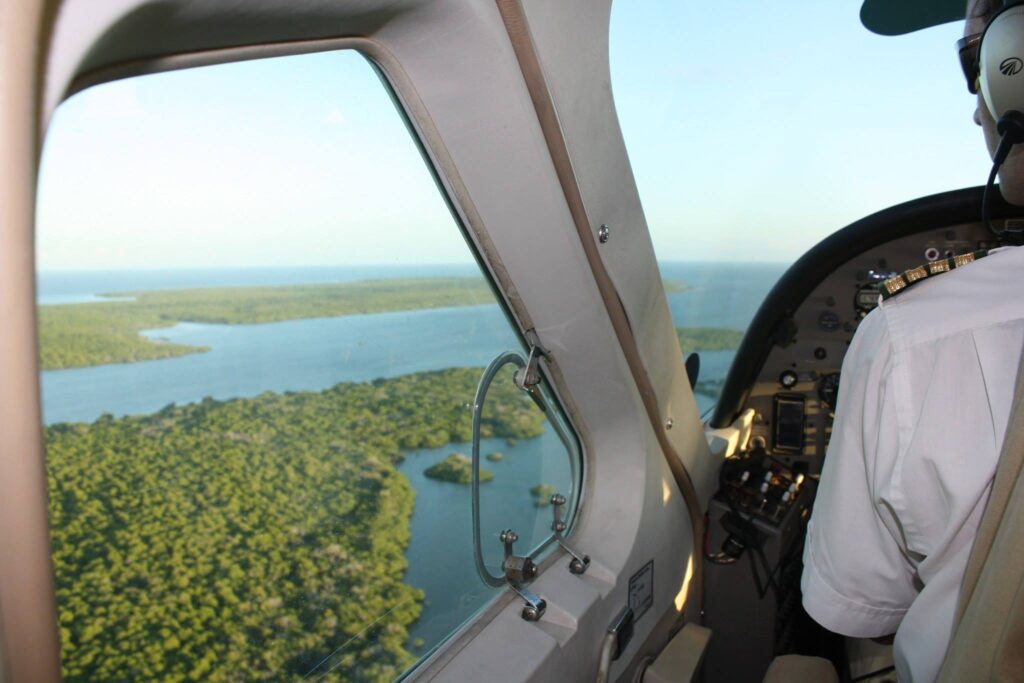The first time I heard an “I went to XYZ country for free using travel rewards” story, I was wildly skeptical. I figured there had to be some catch, some outrageous hidden cost, that would preclude my ability to do this.
My goodness, was I wrong.
In this past year, my partner and I have amassed enough travel reward points to book flights to four different countries on two different continents—almost completely for free. This article will dig into how we did it.
Credit card sign-up bonuses = maximum travel rewards
Before digging too far into the process, I want to clear up something that had me a bit mystified when I first started investigating this stuff.
The best way to accumulate a high number of points quickly is through credit card sign-up bonuses.
While using credit cards for everyday spending is a great way to continuously amass points, by far the best way to gain points quickly is by taking advantage of sign-up bonuses through various travel rewards credit cards.
For example, Chase Sapphire Preferred (my top choice for an everyday-spending credit card) has sign-up bonuses of 60,000 to 80,000 points, depending on when you sign up—so long as you hit the minimum spend within the first few months of owning the card.
If you can open a few cards that all have hefty sign-up bonuses, you’ll find yourself with a nice pile of travel rewards points in very little time. This is what my partner and I did to accumulate over 350,000 Chase points and nearly 200,000 Southwest points—plus scoring us the coveted Southwest Companion Pass—in less than a year.
Travel rewards cards we use
Here is our line-up of credit cards that allowed us to earn the above points.
- Chase Sapphire Preferred
- Chase Business Ink
- United Business MileagePlus
- United Explorer Mileage Plus
- Southwest Rapid Rewards Plus
- Southwest Rapid Rewards Performance Business
Technically, these are all Chase cards, but the United and Southwest cards only earn points for those airlines, with a bit of flexibility for transferring between the three.
We’ll use all our Chase Ultimate Rewards and United points to travel to Europe and Africa in early 2023. Our Southwest points will be used for several domestic trips and to visit Central America, which we’re taking advantage of in late October to go to Mexico.
Southwest Companion Pass
The Southwest Companion Pass is one of those travel rewards that sounds a bit too good to be true. Here’s how it works: If you collect enough Southwest points, you can choose a companion to fly with you for free. And if you get the timing right, you can have this perk for almost two full years.
My partner and I learned about this travel reward almost exactly a year ago, which was great timing. If you can meet the point threshold for the companion pass (125,000 points in a single year) early on in the year, you can get the pass for an entire two-year period.
To make this work for us, my partner opened both his Southwest cards in November 2021. We then made sure to meet the minimum spend by February 2022. We did this through a combination of normal spending and putting large expenses on these cards, including paying our estimated taxes to help us meet the spending threshold required to get the sign-up bonuses.
One of the cards had a 50,000-point sign-up bonus, and the other had an 80,000-point sign-up bonus. We hit both minimum spends by February 2022 and had 130,000 total points, which was enough to qualify for the companion pass for almost two full years—through the end of 2023.
If this all sounds a bit confusing, there’s an excellent podcast episode by Choose FI that dives into this in great detail (Choose FI Episode 353: Families Fly Free). It’s the episode that clued me into the Southwest Companion Pass, and I highly recommend listening to it (especially since we are in the perfect time of year to take advantage of this!).

The 5/24 rule
There’s an important caveat for folks who are going the Chase travel rewards route: Chase has a rule they call 5/24, which means you cannot open more than five Chase credit cards in a 24-month period.
While it may make sense to cycle through cards every few years to maximize your ability to earn points, it’s important to keep track of how many you have and when you opened each.
Best practices for using credit cards for travel rewards
While using credit cards for travel rewards is amazing, there are some best practices to keep in mind.
1. Pay off your card in full each month
This is a big one if you’re trying to keep your credit score high—which you should be doing if you want to keep qualifying for high-reward credit cards.
2. Don’t overbuy just to reach your minimum spend
The only way to truly make your credit cards work for you is if you only use them for purchases you’d already be making. Don’t go out and buy a new wardrobe just to meet your $3k minimum spend: It defeats the purpose of achieving truly “free” travel.
3. Instead, look for creative ways to meet your minimum spend
This was a huge one for us. Rather than buying stuff we didn’t need to meet the magical sign-up bonus spending threshold, we got creative. My favorite way to meet my minimum spend is by paying estimated taxes with credit cards. There is always a fee for doing so—about 2%—but it’s money I have to spend anyway and it allows me to get sign-up bonuses quickly.
Spoiler alert: Credit card points are tax-free
One excellent perk of cashing in on credit card points is that they are tax-free. So, the minute you cash in your rewards, you’re getting that amount tax-free.
Say you earn 200,000 points in a year. When it comes time to book your travel, you’ll get close to the equivalent of $2,000 in flights without having to pay a dime on that “income.”
Travel & FI: Can you really work toward FI while prioritizing travel?

Hell yes. In fact, I think yearly travel helps ready your mind and body for your post-FI lifestyle (see Rose + Jeff).
Before I started working toward FI, I took “mini-retirements” by working really hard, saving up a stack of cash, and moving across the globe for as long as I could until I ran out of money. While I don’t recommend this approach, it did instill in me a ferocious travel bug that I’m not willing to set aside while I save and invest diligently on my way to FI.
Travel rewards are my golden ticket to continue to travel while pursuing FI.
Not only am I finding creative ways to travel for (almost) free, but I’m also reminding myself how valuable and enriching international travel can be.



